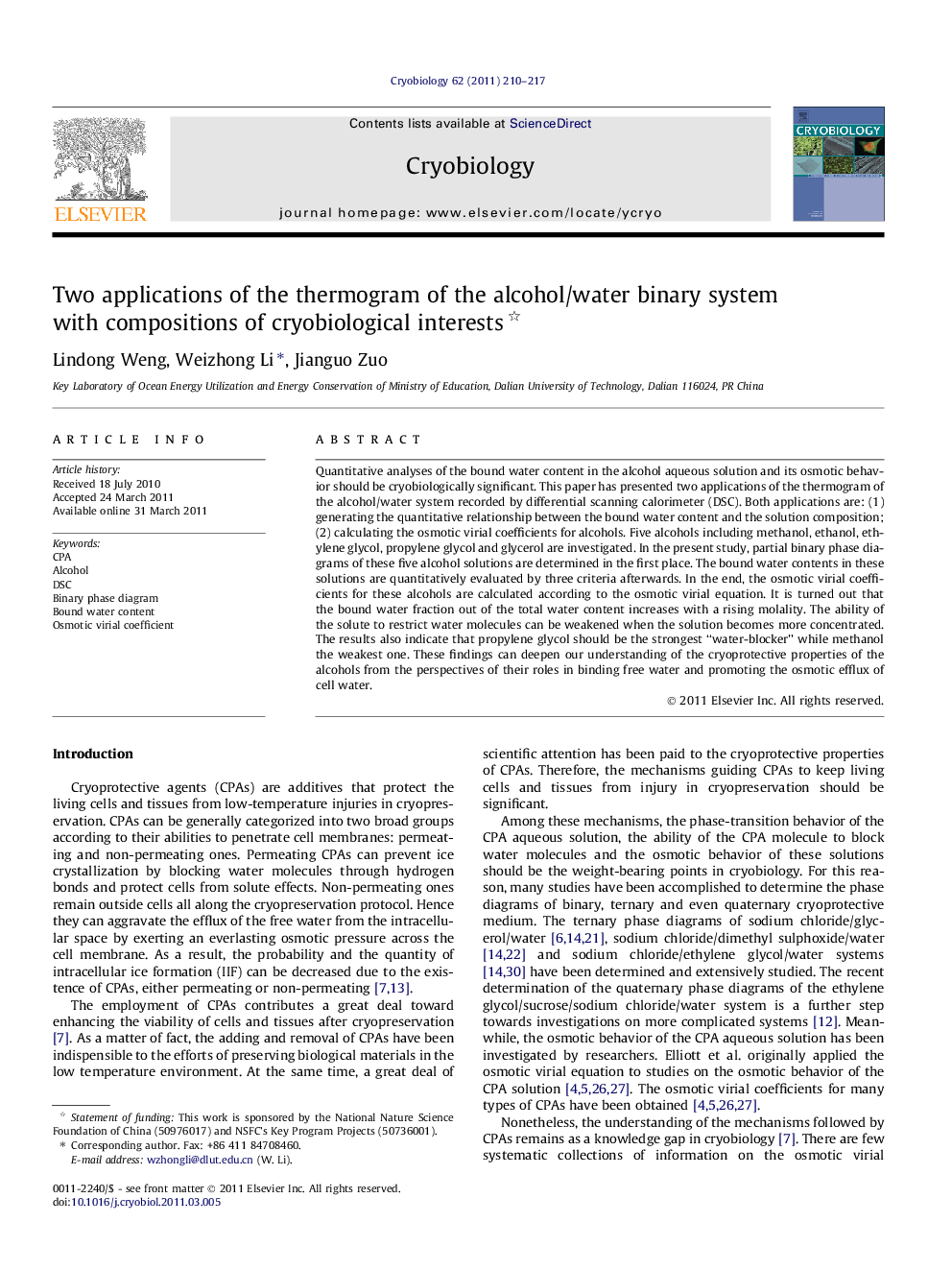| Article ID | Journal | Published Year | Pages | File Type |
|---|---|---|---|---|
| 2168453 | Cryobiology | 2011 | 8 Pages |
Quantitative analyses of the bound water content in the alcohol aqueous solution and its osmotic behavior should be cryobiologically significant. This paper has presented two applications of the thermogram of the alcohol/water system recorded by differential scanning calorimeter (DSC). Both applications are: (1) generating the quantitative relationship between the bound water content and the solution composition; (2) calculating the osmotic virial coefficients for alcohols. Five alcohols including methanol, ethanol, ethylene glycol, propylene glycol and glycerol are investigated. In the present study, partial binary phase diagrams of these five alcohol solutions are determined in the first place. The bound water contents in these solutions are quantitatively evaluated by three criteria afterwards. In the end, the osmotic virial coefficients for these alcohols are calculated according to the osmotic virial equation. It is turned out that the bound water fraction out of the total water content increases with a rising molality. The ability of the solute to restrict water molecules can be weakened when the solution becomes more concentrated. The results also indicate that propylene glycol should be the strongest “water-blocker” while methanol the weakest one. These findings can deepen our understanding of the cryoprotective properties of the alcohols from the perspectives of their roles in binding free water and promoting the osmotic efflux of cell water.
